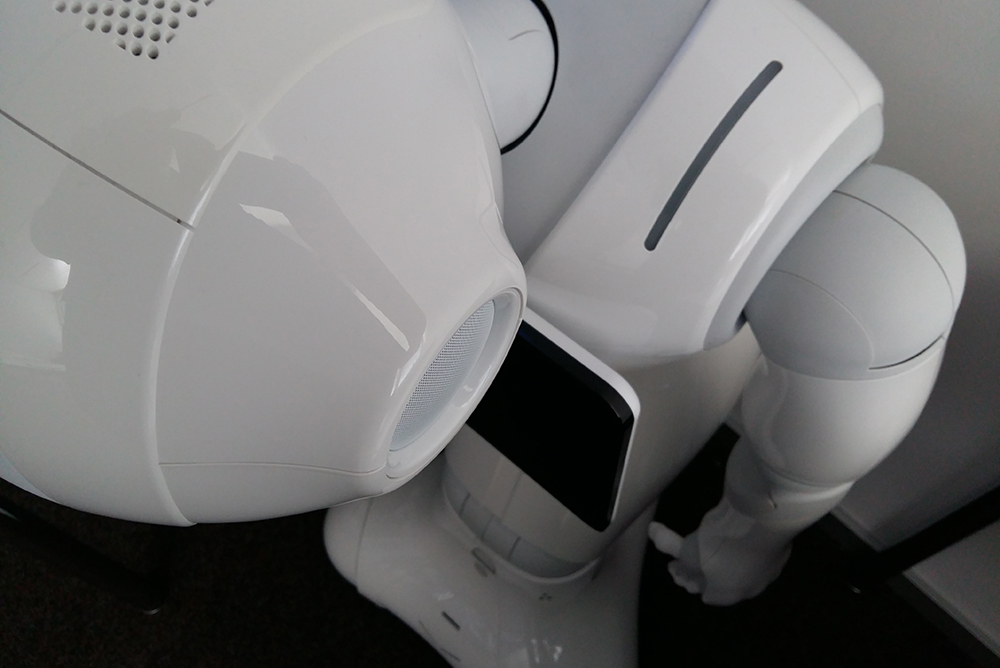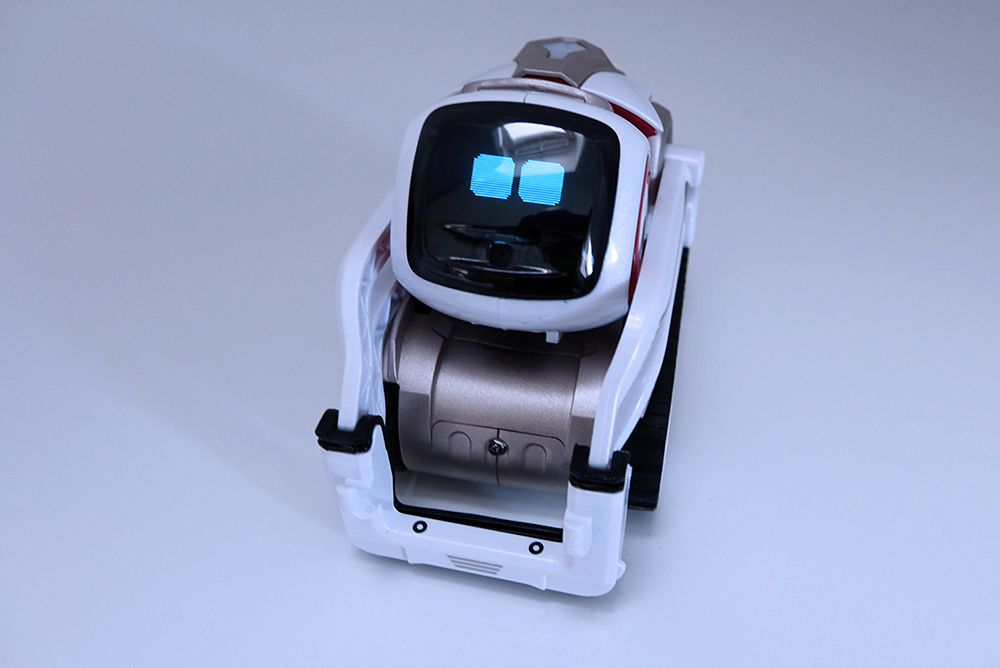The book “Culturally Sustainable Social Robotics” (eds. Marco Nørskov, Johanna Seibt, and Oliver Santiago Quick) was published in December 2020 by IOS Press. From the publisher’s information: “Robophilosophy conferences have been the world’s largest venues for humanities research in and on social robotics. The book at hand presents the proceedings of Robophilosophy Conference 2020: Culturally Sustainable Social Robotics, the fourth event in the international, biennial Robophilosophy Conference Series, which brought together close to 400 participants from 29 countries. The speakers of the conference, whose contributions are collected in this volume, were invited to offer concrete proposals for how the Humanities can help to shape a future where social robotics is guided by the goals of enhancing socio-cultural values rather than by utility alone. The book is divided into 3 parts; Abstracts of Plenaries, which contains 6 plenary sessions; Session Papers, with 44 papers under 8 thematic categories; and Workshops, containing 25 items on 5 selected topics.” (Website IOS Press) Contributors include Robert Sparrow, Alan Winfield, Aimee van Wynsberghe, John Danaher, Johanna Seibt, Marco Nørskov, Peter Remmers, John P. Sullins, and Oliver Bendel.
Welcome to the AI Opera
Blob Opera is an AI experiment by David Li in collaboration with Google Arts and Culture. According to the website, it pays tribute to and explores the original musical instrument, namely the voice. “We developed a machine learning model trained on the voices of four opera singers in order to create an engaging experiment for everyone, regardless of musical skills. Tenor, Christian Joel, bass Frederick Tong, mezzo‑soprano Joanna Gamble and soprano Olivia Doutney recorded 16 hours of singing. In the experiment you don’t hear their voices, but the machine learning model’s understanding of what opera singing sounds like, based on what it learnt from them.” (Blop Opera) You can drag the blobs up and down to change pitch – or forwards and backwards for different vowel sounds. It is not only pleasurable to hear the blobs, but also to see them. While singing, they look around and open and close their mouths. Even their tongues can be seen again and again.
Cozmo is Almost Back
One year ago, The Robot Report reported that Anki’s little robots might be making a comeback. Digital Dream Labs in Pittsburgh acquired the patents, trademarks, and domain. The start-up company “is planning to revive and manufacture more units of each product in the following order: Overdrive, Cozmo, Vector” (The Robot Report, 26 December 2019). Digital Dream Labs founder H. Jacob Hanchar told The Robot Report “the goal is to have all three products available for purchase for Christmas 2020” (The Robot Report, 26 December 2019). Now it seems that pre-orders of Cozmo 2.0 are possible: “Cozmo is a fun, educational toy robot that you can be used to teach children the basics of coding. Whether he is performing tricks, exploring his environment or teaching coding, Cozmo is always full of personality. Pre-order your new Cozmo today for delivery as early as May 15th.” (Website Digital Dream Labs) Cozmo and his friends belong to the best social robots that the industry has ever produced. What is special about Cozmo is the many emotions it can show (but of course doesn’t have). It also has face recognition and a night vision device. More information at www.digitaldreamlabs.com.
A Digital Supermodel
Cameron-James Wilson, 31, founded an agency for digital models in London in 2019, The Diigitals. He is the creator of the digital supermodel Shudu. “Since baffling the fashion and modeling world at large, he’s added virtuals Galaxia, Brenn, Dagny, Koffi, Margot, and Zhi to the Gram family.” (Virtual Humans, 4 May 2020) Galaxia is an alien model and has long, pointed ears and a long neck. Koffi is a male virtual influencer with a muscle-rich body, which he likes to show in sparse clothing. Shudu is the most famous avatar of the agency. At this year’s digital fashion shows in Paris and Milan, a number of CGI (Computer Generated Imagery) models and avatars presented the new looks. Shudu was not there, which the creator explains in a SPIEGEL interview by the fact that it is still difficult to animate her to move like a real person. At the end Barbara Markert asks him what Shudu means to him. He answers: “It may sound crazy, but I feel a responsibility for this woman and the community she represents.” (SPIEGEL, 9 December 2020, own translation)
Young Girls could Kill Autonomous Driving
On behalf of Prof. Dr. Oliver Bendel, M. Hashem Birahjakli investigated possible attacks on self-driving cars as part of his final thesis in 2020. The supervisor was Safak Korkut. In the chapter “Attacking Scenarios on Sensors” the student divided into invasive attacks and non-invasive attacks. In the section on invasive attacks he dealt with different sensors and examined possible attacks based on scenarios: vision-based cameras (chewing gum, lipstick, and nail polish; spraying paint; transparent colored foil; concave lenses), radar (chaff, countermeasure), lidar (mirror and reflective objects; dust; face powder), inertial measuring unit (magnet), and sonar (carrot and stick; duct tape). In the section on non-invasive attacks he dealt with fake traffic signs, invisible or fake obstacles, and roadside attacks. The results of the work suggest that every 14-year-old girl could disable a self-driving car. So far, hacking has been seen as the greatest threat to autonomous driving. But while not everyone can hack, almost everyone carries chewing gum or lipstick. The automotive industry should consider this threat seriously.
Evolutionary Machine Ethics
Luís Moniz Pereira is one of the best known and most active machine ethicists in the world. Together with his colleague The Anh Han he wrote the article “Evolutionary Machine Ethics” for the “Handbuch Maschinenethik” (“Handbook Machine Ethics”). Editor is Oliver Bendel (Zurich, Switzerland). From the abstract: “Machine ethics is a sprouting interdisciplinary field of enquiry arising from the need of imbuing autonomous agents with some capacity for moral decision-making. Its overall results are not only important for equipping agents with a capacity for moral judgment, but also for helping better understand morality, through the creation and testing of computational models of ethics theories. Computer models have become well defined, eminently observable in their dynamics, and can be transformed incrementally in expeditious ways. We address, in work reported and surveyed here, the emergence and evolution of cooperation in the collective realm. We discuss how our own research with Evolutionary Game Theory (EGT) modelling and experimentation leads to important insights for machine ethics, such as the design of moral machines, multi-agent systems, and contractual algorithms, plus their potential application in human settings too.” (Abstract) Springer VS published the “Handbuch Maschinenethik” in October 2019. Since then it has been downloaded thousands of times.





